If we're talking about real survival scenarios, wilderness survival, and bushcraft, the most valuable tool to have is a good knife.
Survival situations aside, even in day to day life, it's still one of the most practical and useful things, yet generally speaking most people don't really carry knives anymore. Most people still use a blade of some kind on a semi-regular basis, but they are relegated to using an exacto knife at work or a razor in the shower.
We seek to reconnect the humanimal to practical knowledge, tools, and resources.
We recently added a selection of our master crafted EPIC HANDMADE KNIVES to the Peerhub marketplace to support this community and elevate the value of Steem. On top of that, we are now going to share our extensive knowledge on choosing and using these important tools. Regardless of when/where/if you choose to get a knife, you can utilize this valuable information.
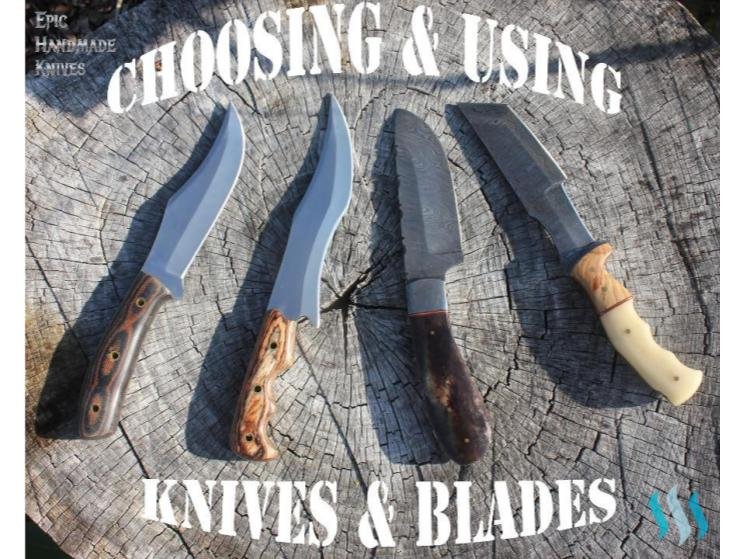
A knife is empowering because it has endless uses--some of them literally the difference between life and death.
Familiarize yourself with knives and carry one about your person (along with a bottle of colloidal silver, a paracord bracelet, and firestarter) to be prepared for any scenario. If you don't have a knife, you can't use it!
You have countless uses for a knife throughout your average day, so it's definitely worth investing in a quality tool. The practicality factor is a great place to start a discussion of EPIC HANDMADE KNIVES.
There are some considerations when selecting a useful blade:
- What is the intended purpose? You're not going to kill a wild boar with a butter knife. Quinn can, but you can't. The intended purpose determines appropriate shapes and features.
- What materials is it made of, and how is it crafted? Again, your intended purpose dictates an appropriate material. High quality craftsmanship yields high quality knives.
- Why does size matter? You definitely don't want to get caught with your pants down with an inappropriate blade, so to speak.
- Does it match my outfit? Seriously, some of y'all can really stand to step up your style game. Why sacrifice your look when you can be epic at the same cost?
What is the intended purpose of your knife?
You can't utilize the endless uses for a knife unless you're carrying the knife! Here are a few thoughts:
Do you need something lightweight and agile, or something big and heavy with a lot of power?
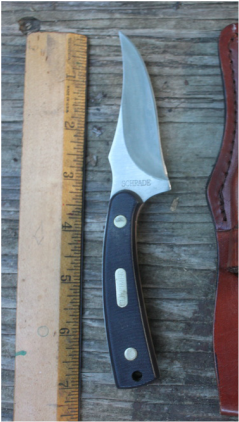
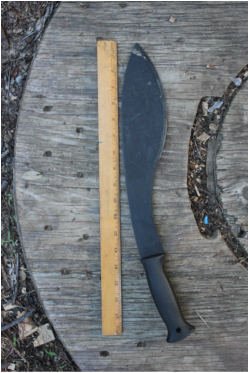
Will you be exposing your blade to moisture? In that case, you want something that won't rust as easily.
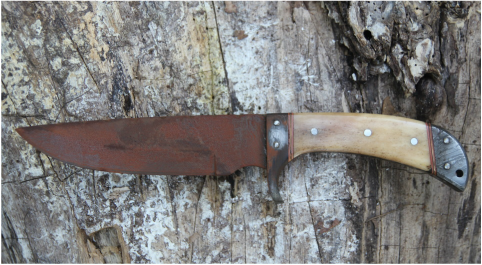
Will you be chopping or throwing? A steel that's too hard will chip; you want something with a little more flexion for these heavy-duty tasks.
Do you need to skin or scrape something? The best skinning knives are ones that don’t have points, because you’re much less likely to puncture or cut the hide.
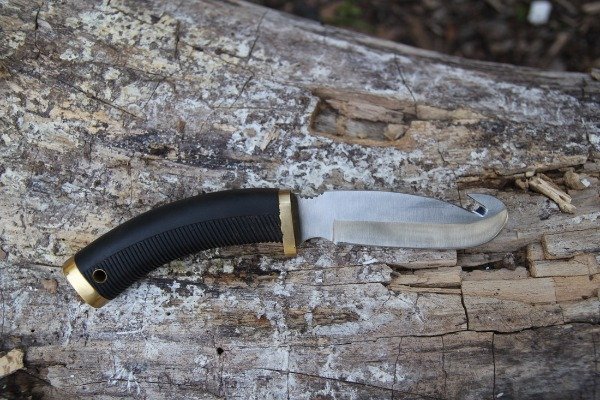
Do you need a razor's edge? You either need to be able to sharpen the blade frequently, so you'd go with a softer steel, or you could get something double sided or with multiple cutting edges.
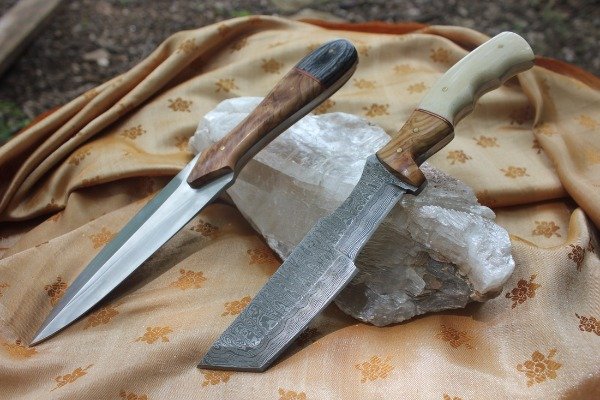
We could go as deep as you like into the many uses of a knife, and we'll give you as much as you can take in upcoming posts, but this is a good starting point for a topical discussion. The intended purpose determines the next consideration:
What material is it made of, and how is it crafted?
Our EPIC HANDMADE KNIVES come in varying types of steel. We'll look at 4 types in this post: stainless steel, D2, Damascus, and 1080 high carbon, and each has pros and cons.
Stainless Steel
This is the most common steel for knives these days, and while there are MANY types of stainless steels, what all stainless steel have in common and WHY it is so desirable for most modern consumers is that it is more water resistant than say damascus or 1080 high carbon steel.
Just because it is called stainless does not mean it does not rust. If you leave almost any stainless steel knife in a bowl of water or expose it to the ocean, it WILL rust. It will rust much slower and less dramatically than 1080, but it WILL rust.
Almost all kitchen and pocket knives are made of some kind of stainless steel (most commonly 440 SS). This is because the modern human doesn't like to take care of things and likes for things to be easy and maintenance free. As far as blade steels go, SS is where it's at for that!
However, as we mentioned all steels have their pros and cons. The cons to SS is that it is a more brittle and less durable steel in comparison to say 1080, and it's also harder to sharpen. A high quality 1080 master craft blade can literally cut a high quality SS blade in half with little damage to the 1080 blade. So the benefits are it is lower maintenance and requires less care to use and keep, and the drawback is that it is an inferior steel as far as pure blade power.
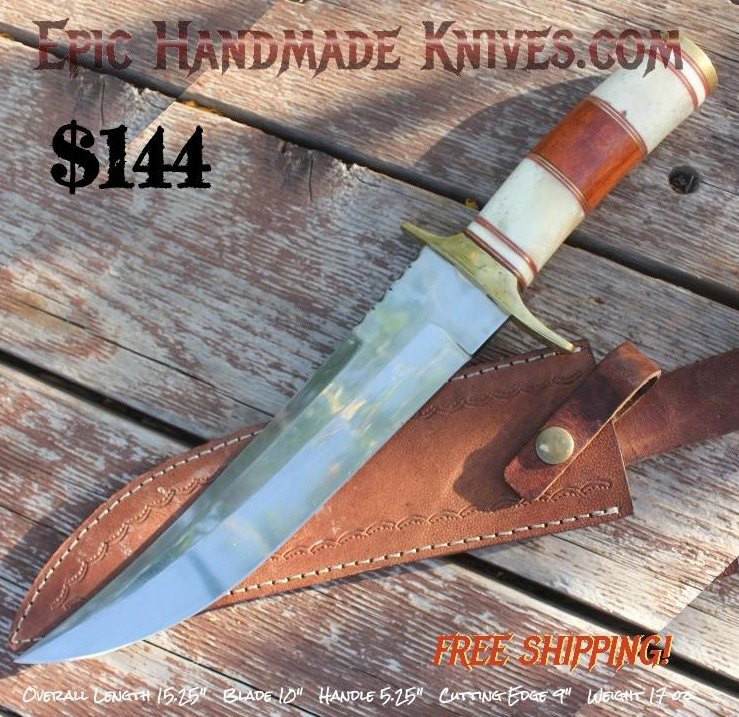
D2
D2 is a high grade tool steel alloy. It's very hard, which makes it difficult to sharpen, but it does hold a sharp edge for a long period of time in comparison to almost all other steels. It's also more resistant to rusting than say a 1080 steel.
Too hard has its downsides, however. If it's too hard, it's more brittle and prone to chipping. Plus, if you’re using a flint to start a fire, D2 steel is too hard to get a spark.
When you’re using flint and steel to start a fire, what’s actually happening is that the stone is really sharp/hard, and striking the steel is causing the metal to combust. Just like when you’re burning leaves or wood, it’s the carbon that’s actually burning. You need something with high carbon content that is soft enough to get a spark with flint.
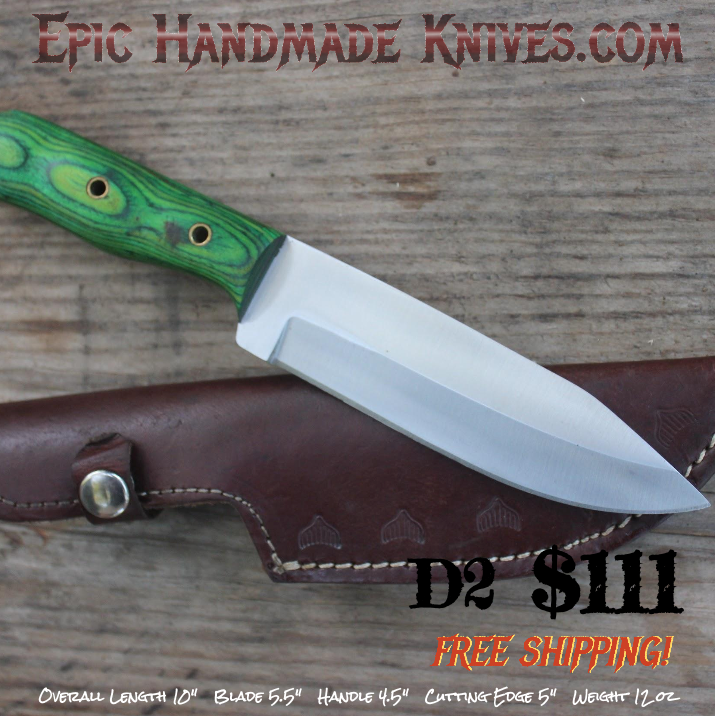
1080 High Carbon
High carbon steels like 1080 are softer than D2, but they have more strength. There is more flexibility to the metal. Because the carbon content is high but its not as hard as say D2 1080 steel is combustible. However, 1080 steels and damascus steels are more prone to rusting than D2.
If your blade is exposed to moisture, you want to consider something rust-resistant or even a waterproof coating. You can apply your own waterproof coatings, something like epoxy or even spray paint on a tool like an ax. There are chemical coatings available on some of our 1080 high carbon steels that are bonded to the metal. They give the blade a beautiful dark finish.
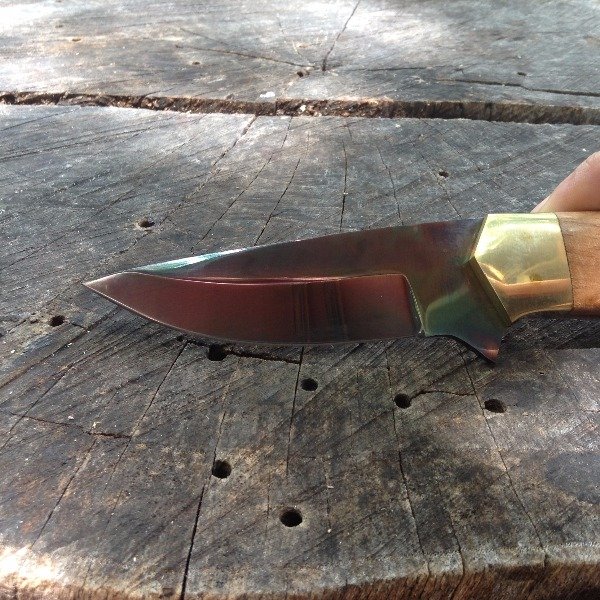
Damascus
Damascus originates from Japanese masters who bend and fold, bend and fold, bend and fold layers of steel over and over again in their legendary katanas. Even today these master forged folded katanas are considered the best blades in the world! It's beautiful and strong, but again it's very prone to rust. You have to constantly keep it dry and oiled.

Tang
The highest quality knives are full tang, which means the steel runs the length and width of the handle. Rat-tail tangs are weaker because they don't run the width of the handle; they taper off into a skinnier portion. I would never consider any blade that is not at least a rat-tail tang! Of course, all EPIC HANDMADE KNIVES have a full tang for superior quality.
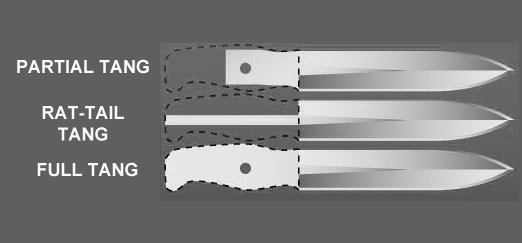
Smithing, forging, and tempering are vital to the quality of the blade.
You can start with a high quality steel, but if it is improperly crafted the entire knife is compromised.
When you do a forge-crafted blade, all the bevels and all the angles and the whole shape are pounded. It takes a mass amount of skill and a mass amount of time and a mass amount of strength; it requires a lot more experience and expertise to do it properly. The metal has to be the exact right temperature every time you strike it. If it's not, you actually damage the integrity of your blade. Potentially, you can get the most superior blades doing hand forging, but it takes a lot more time and is therefore a lot more expensive.
So if you don’t know what you’re doing, if you’re not a master forger, you’re going to create an inferior blade to say a grounded kiln-tempered blade. Even though it’s not forged, in this case the kiln-temper is gonna be way better because it’s homogenous.
If you have any weaknesses in your blade at all, then the blade itself becomes almost worthless because that one weak point is going to compromise the whole thing. If you have an improper part of your blade within the useable part of your blade and you put it to the test, then your whole blade will be ruined--it’s gonna break. That's certainly not what you want if your life is on the line!
You definitely want a knife that is well crafted to be of high quality, and your intended use will determine the materials and features of the blade. The next point to consider is:
Why does size matter?
For everyday carry, you may want something light and agile that's easy to pull in and out of a sheath. In a survival situation, you might want something more substantial that can chop wood or kill things. (By the way, you can cut trees with small blades, but it takes more skill and knowledge or a lot more time than using say a machete or a kukri.)
In addition to the intended purpose of the knife, legality is an issue to consider for those wishing to refrain from run-ins with the mafia. If you live in a city or out in civilization, there are states and countries that have all sorts of regulations on carrying knives. It’s ridiculous; obviously we don’t live in a free country. You are at risk of being put into prison or having men with guns come after you if you carry knives over certain sizes.
In Texas, it is unlawful to carry these blades in public:
(A) knife with a blade over five and one-half inches;
(B) hand instrument designed to cut or stab another by being thrown;
(C) dagger, including but not limited to a dirk, stiletto, and poniard;
(D) bowie knife;
(E) sword; or
(F) spear.
So in weighing the practicality of a high quality blade to carry every day, we've considered your intended purpose, which determines the appropriate materials and features of the knife in addition to the size. The last thing to think about is totally worthwhile:
Does it match my outfit?
If you can look epic for the same cost and effort as it takes to look like a standard, boring Babylonian, why wouldn't you choose to express your style?? Carrying a blade is not only fully functional and practical, but it takes your dress to the next level!
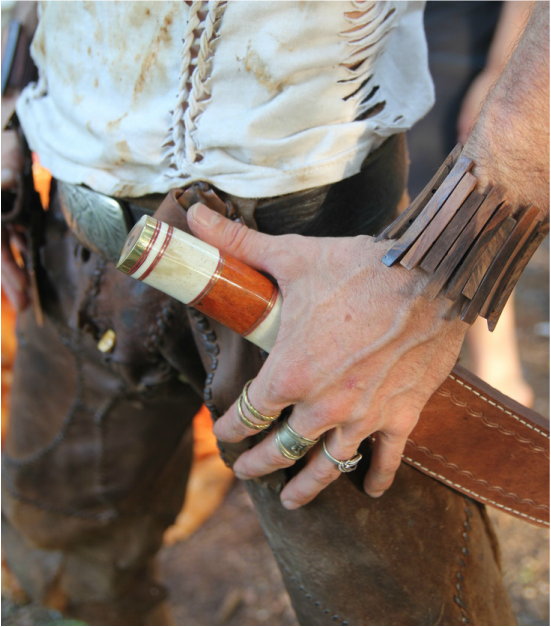
Carrying a knife is like wearing a functional piece of art! It’s a conversation piece; it’s got a good story. If you love knives, and it’s one of the best investments you can possibly have, why not get some show blades, some fun art blades, that are still practical, useable blades?
EPIC HANDMADE KNIVES offers a variety of styles to complement every occasion for the wise and well-dressed gentleman and lady.
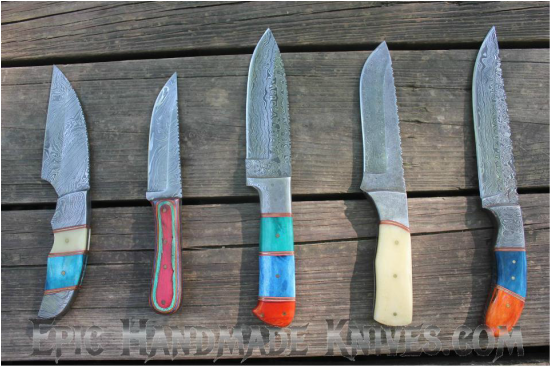
We are dedicated to sharing sustainable options for thrival. As with all of our operations, 100% of proceeds from our EPIC HANDMADE KNIVES line are devoted to our social outreach and humanitarian works. We will continue to release our collection on Peerhub to offer by SBD donation towards our cause of feeding, clothing, housing, and educating more people than ever before, AND it will strengthen the Steemit economy!
www.intothegardenofeden.com

